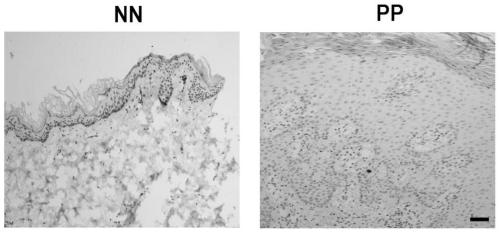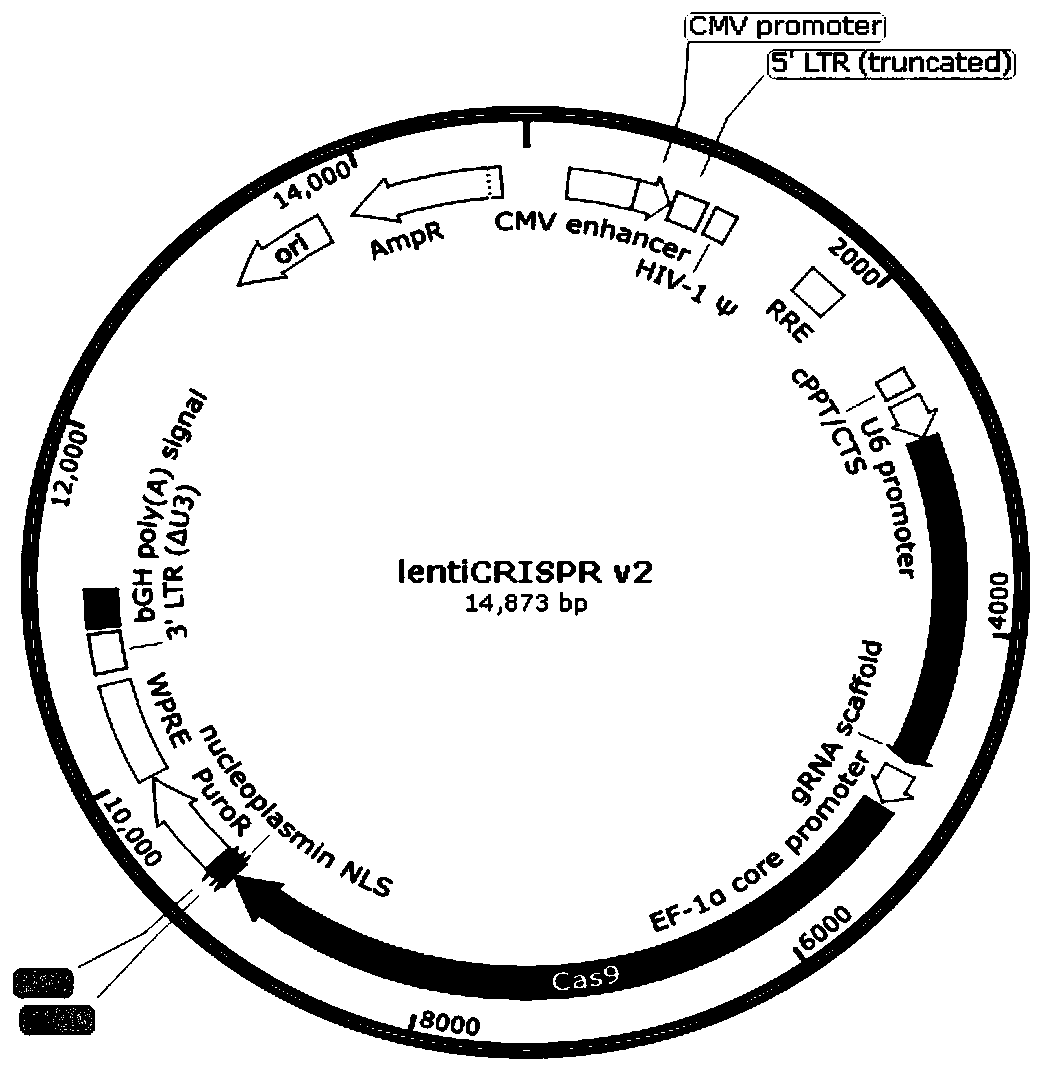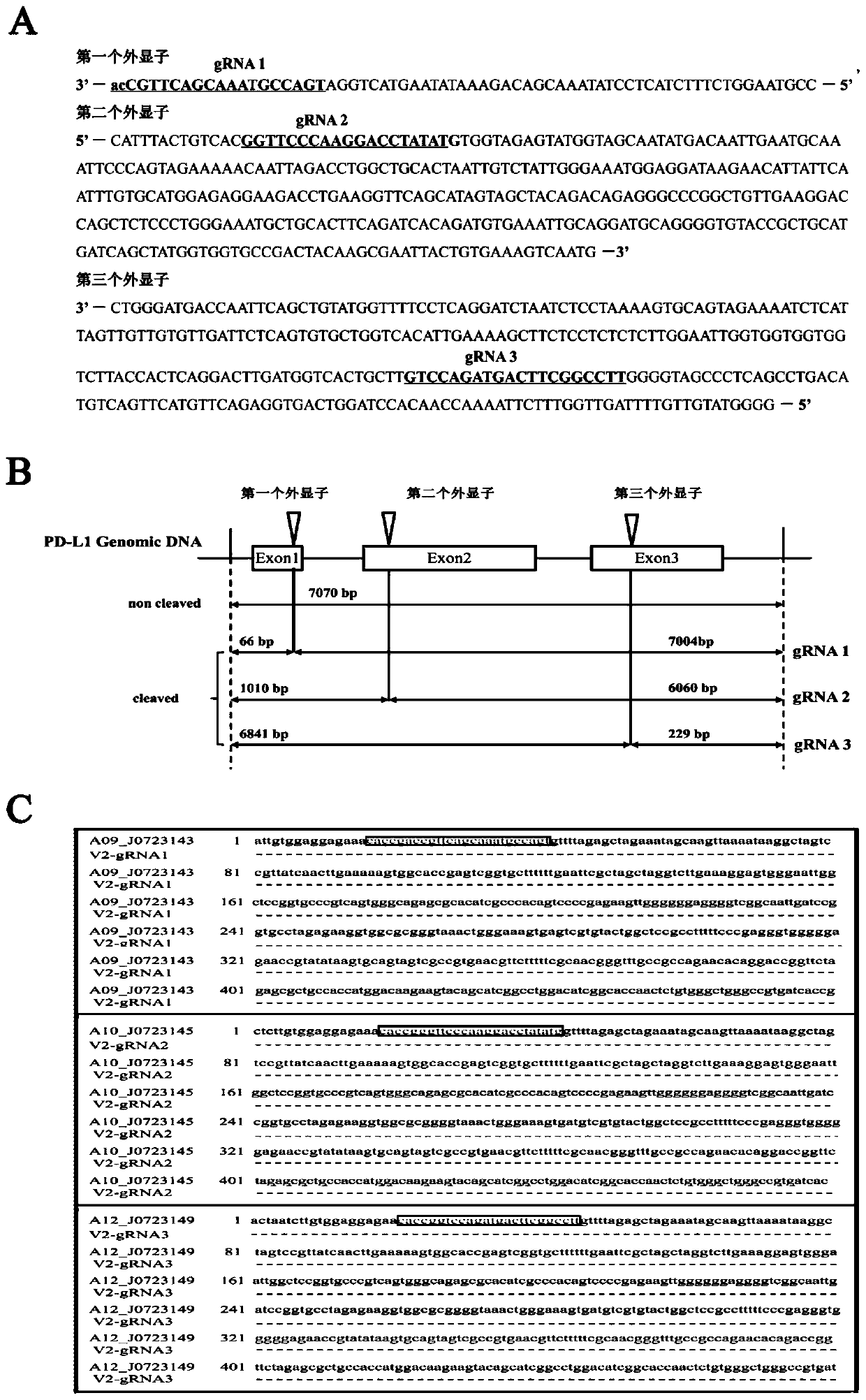Method for knocking out PD-L1 gene in keratinocytes by CRISPR/Cas9 gene editing method
A PD-L1 and gene editing technology, applied to other methods of inserting foreign genetic material, cells modified by introducing foreign genetic material, animal cells, etc., can solve the problems of psoriasis patients who are difficult to continue to adhere to treatment and adverse reactions.
- Summary
- Abstract
- Description
- Claims
- Application Information
AI Technical Summary
Problems solved by technology
Method used
Image
Examples
Embodiment 1
[0044] Example 1: Expression of PD-L1 in keratinocytes of skin lesions of patients with psoriasis
[0045] 1. Materials and methods
[0046] (1) Subjects and samples
[0047] A total of 27 subjects participated in this study, including 18 in the disease group and 9 in the healthy control group. The skin samples of the disease group were provided by patients with psoriasis in the Dermatology Department of Shanghai Changhai Hospital, and the skin samples of the healthy control group were provided by volunteers who underwent plastic surgery at the Department of Plastic Surgery of Shanghai Changhai Hospital. This clinical study was approved by the Ethics Committee of Shanghai Changhai Hospital.
[0048] Subject inclusion and exclusion criteria are as follows:
[0049] 1. Inclusion criteria
[0050] Psoriasis group: (1) Patients with vulgaris psoriasis diagnosed by two or more dermatologists; (2) without blood and severe cardiovascular diseases; (3) without other autoimmune dis...
Embodiment 2
[0075] Example 2: Using CRISPR / Cas9 technology to construct a PD-L1 knockout keratinocyte model
[0076] In humans, the full length of the PD-L1 gene contains 7 exons and is located at the p24.1 site on chromosome 9. PD-L1 protein is a type I transmembrane protein, consisting of 290 amino acids, including IgV-like and IgC-like hydrophobic transmembrane domains. As the third member of the B7 protein family, it has 15%-20% homology with B7.1 and B7.2 proteins (Kythreotou A, Siddique A, Mauri FA, Bower M, Pinato DJ.Pd-L1.Journal of clinical pathology. 2018,71(3):189-94.). Through previous studies, it is known that PD-L1 plays an important role in psoriasis, and immunohistochemical results show that epidermal keratinocytes of healthy people express a large amount of PD-L1, while PD-L1 is expressed in keratinocytes of skin lesions of patients with psoriasis. The expression of -L1 was significantly downregulated. Kim et al. (Kim J, Bissonnette R, Lee J, Correa da Rosa J, Suarez-F...
Embodiment 3
[0150] Example 3: Effects of PD-L1 Knockout on Cell Regulatory Factors Secreted by Keratinocytes
[0151] PD-L1 mainly plays its role by binding to its specific receptor PD-1. PD-L1 knockout mice or PD-L1 antibody blocking mice have been widely used in the research of autoimmune diseases and autologous transplantation diseases. However, PD-L1 is widely distributed, and it is not very good to distinguish whether the intervening PD-L1 plays a role in tissues or lymphocytes. Keratinocytes can regulate the proliferation and activity of T cells through PD-L1 (Mazanet MM, Hughes CCW. B7-H1 Is Expressed by Human Endothelial Cells and Suppresses T Cell Cytokine Synthesis. The Journal of Immunology. 2002, 169 (7): 3581- 8.). (Ritprajak P, Hashiguchi M, Tsushima F, Chalermsarp N, Azuma M.Keratinocyte-associated B7-H1 directly regulates cutaneous effector CD8+T cell responses.Journal of immunology.2010,184(9):4918-25.) by Ritprajak et al. The study of K14-PD-L1 transgenic mice found tha...
PUM
 Login to View More
Login to View More Abstract
Description
Claims
Application Information
 Login to View More
Login to View More - R&D
- Intellectual Property
- Life Sciences
- Materials
- Tech Scout
- Unparalleled Data Quality
- Higher Quality Content
- 60% Fewer Hallucinations
Browse by: Latest US Patents, China's latest patents, Technical Efficacy Thesaurus, Application Domain, Technology Topic, Popular Technical Reports.
© 2025 PatSnap. All rights reserved.Legal|Privacy policy|Modern Slavery Act Transparency Statement|Sitemap|About US| Contact US: help@patsnap.com



